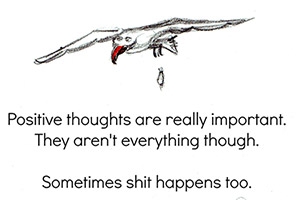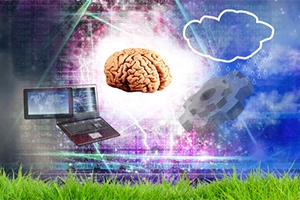Bystander Apathy: "It's none of my business"
The horrifying human tendency to do nothing, and how to avoid its awful consequences
 Knowing how to stop the 'bystander effect' can be the difference between life and death
Knowing how to stop the 'bystander effect' can be the difference between life and deathWhen I was 13 I witnessed a boy having an epileptic fit. But, along with the other boys in the school yard, all I did was stop and stare.
He writhed and rolled helplessly on the concrete.
I wanted to intervene, but no one else was helping. So I didn't either. The kind of situation shame was invented for!
Eventually the seizure stopped and the boy seemed to be okay. Besides, by then a teacher had arrived and taken control. It seemed this boy was prone to seizures. But it struck me as strange, even then, how none of us did anything other than stand there like half-witted halfwits (quarter-wits?)!
Mind you, I'm not prone to being too hard on myself - so I won't be. But it did trouble me. When you react in ways that unexpectedly disappoint or please you it's always worth looking into.
In fact, I - we - had experienced the paralysis of 'bystander apathy' firsthand, and I have consciously tried to never let it happen to me again.
Disconnection happens when we see others as different from us. But of course we are all part of the human family. Help him! Help her! We must all help one another.
Back when I was 13 I had no idea my paralysis to act had a name and had been observed many times by psychologists and anyone else with eyes to see throughout history. 1
Why do perfectly decent people not intervene when they could and should? And how can taking responsibility help us improve humanity and prevent all manner of horrific events?
The concept of bystander apathy - the situation where witnesses of a problematic event do nothing when they could or should - has grisly origins.
Why Catherine Genovese died
Make no mistake. Young Catherine Genovese died back in 1964 in Queens, New York because of one man: Winston Moseley.
On Friday 13 March that year, Moseley stabbed Genovese many times in a prolonged assault. It was reported at the time, specifically by the New York Times, that 38 witnesses had seen the murder and no one had called the police or done anything to help.
This account has since been questioned (Association for Psychological Science, 2017). It seems the police were called at least once during the prolonged and torturous murder, and there seem to be other inaccuracies in the account of what happened. But from this tragic incident was born the popular concept of bystander apathy, sometimes called Genovese syndrome in memory of Catherine Genovese.
There was a huge public outcry at the time of this murder in response to what was seen at the time as wilful refusal to help. Readers of The New York Times and other publications wrote that these vicious bystanders killed this woman just as surely as Moseley did, and should be punished for their 'crime' of not helping when they had the power to.
But within the deepest tragedy lies the opportunity for knowledge.
Are we just 'sheeple'?
During the publicity and mass denouncement of the witnesses after the Genovese murder, two young experimental psychology researchers, John Darley and Bibb Latane of Columbia University, wanted to discover whether 'not helping' - the bystander effect - was something that people commonly did, and if so, why?
They wanted to understand, not just condemn, the people who were nearby, saw some of the attack, or heard the cries for help, but who did nothing to intervene during the 35 minutes it took for a young woman to be raped and murdered on their doorstep.
Their hypothesis was that people's decision not to act was dictated more by the social context than by the moral standards of the witnesses.
In other words, they were proposing that the context of a situation can, for many people at least, determine whether they behave as 'good' or 'bad' people. How much of what we say, think, and wear is down to what other people are saying, thinking, and wearing? If we're not careful we can become like the followers of Brian.
"I am not an individual!"
In the Monty Python film Life of Brian, Brian the reluctant messiah shouts exasperatedly down to his throngs of followers: "You must think for yourselves!"
To this they all slavishly respond (in unison!), "We must think for ourselves!"
Brian then shouts to them, "You are all individuals!"
Again, the masses collectively and robotically echo his words: "We are all individuals!"
But a tiny voice pipes up from the crowd: "I'm not!"
Absurd as this may seem, it neatly matches what psychologists have discovered about much of human (group) nature. We like to think of ourselves as 'individuals', but a surprising amount of what we do and think is really prompted by group-action and groupthink (selfie trout pout anyone?).
Knowledge that we are not immune from groupthink and awareness of when it is operating within us can help us towards more genuine individuality.
More on that in a moment, but first let's get back to the research of John Darley and Bibb Latane (1968).
Ah, it's probably just a fire. Let's do nothing!
In thinking about the seeming inaction of the witnesses in the tragic Genovese case, Darley and Latane thought they saw a common pattern of everyday life.
For instance, if a fire alarm goes off in a building and no one else seems concerned, most people will continue to do nothing simply because other people are doing nothing. Or in the street, if someone falls over and no one helps, you might not help either if other people aren't helping.
Our two intrepid researchers decided to put this to the test. Obviously, they couldn't imitate a murder, so they decided to imitate a seizure.
A devastating experiment
Concealing their real objective, Darley and Latane recruited a group of student volunteers and told them they would be taking part in a study about adapting to student life at the university.
A student was to sit alone in a separate room and talk into a microphone for two minutes about their experiences of university life. In a series of separate audio-wired rooms were tape recorders which would play other students' stories. However, the subject was unaware that these accounts were pre-recorded, and thought that the voices they could hear were other students participating in the study.
The instructions were clear. The subject was to wait their turn while each pre-recorded voice carried on about their trials, troubles, and challenges of college life. When the subject's turn came, he or she could speak for two minutes. When it was not their turn, their microphone was switched off, and they would just listen to what they believed to be a real person in another room.
The first voice to speak was a pre-recorded account from a supposedly epileptic student. He or she (the recordings varied) confessed to the rest of the 'group' (remember, there was only one actual student present) that he or she was prone to potentially life-threatening seizures which might be stress induced.
The phony student said exams were tough for him, and that New York was tough to live in; he spoke with halting embarrassment about his 'condition'. He said he found college life tough. His voice then muted, and another pre-recorded voice spoke as the real student listened. This carried on - 'student' after 'student' speaking for two minutes at a time - until something happened. A seizure started.
"I'm feeling I'm going to die!"
The real student could not, of course, see the 'seizure', as they were in a separate room by themselves, but they could hear it.
The epileptic actor's voice became staccato, and got louder, more panicky and insistent: "I'm... I'm having a fit... I... I think I'm... help me... I... I can't... Oh my God... err... if someone can just help me out here... I... I... can't breathe p-p-properly... I'm feeling... I'm going to d-d-die if..." Then there was a final choke, then silence. The 'seizure' lasted a full six minutes.
Now the one live listener - who of course would have been thinking that there were at least one, two, or up to five other listeners who could also hear what was going on - could at any point get up, leave the room, go down the hall, and ask the experimenter for help.
Darley and Latane had been careful to construct the experiment to mimic the circumstances of the Genovese murder, or at least the way it had been widely reported.
Okay, that was the setup. So what happened?
Someone must be onto that... right?
Very few students tried to help their fellow student - 31%, to be exact. That is, most people didn't help, even though they believed someone might be dying!
They were anxious, but they didn't act. The researchers found that if the subjects believed they were in a group of four or more students they were actually far less likely to go for help.
But here's the thing.
When the students being tested believed it was just them and the epileptic student and no one else, 85% of the subjects sought help!
The bigger the group, the less likely the individual is to act. If they were to act, they would do so in the first three minutes of the crisis. If you don't act in the first three minutes of an emergency, you are very unlikely to act at all.
Remember that and act! Be the voice in Brian's crowd who yells out "I'm not!"
There's danger in numbers
By the way, this research has been replicated among other sectors of the population, not just among students. And one thing seems clear. The rates at which people are willing to take personal responsibility and help remain constant.
There is something about being in (or believing ourselves to be in, as with this experiment) a larger group that stops us acting as individuals.
And this leaves us with a bizarre conclusion.
Statistically, it may be safer for you to collapse in front of one or two people than in a crowd of onlookers. There is not always 'safety in numbers'.
When the students thought another student was having a seizure, they became scared, upset, and anxious. None of them was just apathetic or indifferent (as the morally outraged newspaper readers assumed that the witnesses of the 1964 murder had been), but most of them still didn't help.
Much bystander apathy isn't about not caring or being cruel; rather, it's about not understanding that the buck always has to stop with you.
I can guarantee you've heard these following words at some time. Perhaps you've said them yourself.
"I don't want to get involved!"
Too late. If you're there, you're involved. And if I'm there too, so am I. If we are watching TV, we are not involved. But if we are watching events unfold before us, how can we not be part of that somehow? Even at the 'risk' of looking foolish.
Of course, sometimes there might be little you can do, or those involved might tell you to 'butt out'. Maybe it's too dangerous, or maybe you can see that someone else is already helping sufficiently. But at least then your decision not to act is predicated on reasons other than blind group behaviour, otherwise known as dumb conformity.
This next bit of research highlighted something I think is truly scary. It seems that most of us would sooner risk death than go against the majority.
Death before nonconformity!
Darley and Latane conducted further research. They wanted to see if we would still be influenced into inaction by groupthink if the person 'in need' was us instead of someone else.
They constructed an office with an air vent. In this office sat one student (again ignorant of the real object of the study) and two actors. They were to sit together filling in psychological questionnaires. Several minutes into the experiment, the researchers released non-hazardous but convincing-looking smoke into the room via the air vent.
The actors were under instruction to ignore the smoke and keep filling in their questionnaires. The smoke made them all cough, and got so thick it was hard to see. Still the two actors just went on calmly filling out their forms. The subjects looked concerned, and a few actually got up, went to the vent, looked back at their calm fellow questionnaire-fillers, and then went back to their own forms!
Because they were in a minority of one, they ignored their own logic and instincts. This tells us something vital that can help us understand a common, perhaps universal, weakness of humanity. A weakness we can all overcome.
Some ventured to ask the other two whether this was strange, but the actors just shrugged such questions off. In the whole experiment, only one student actually left the room and reported the smoke!
When in doubt... doubt. And do something!
Taking the lead from others
The subjects based their action, or inaction, on the social cues of those around them rather than on the evidence before them. They had smoke in their eyes and a fine white film in their hair and on their lips, and they were coughing and spluttering, yet still they continued to do nothing about it (because the others were doing nothing).
In the end, the researcher had to come and put a stop to the experiment. It seems people would rather risk their lives than go against the grain and 'break rank'.
But I think this next finding says it all.
When the subject was alone in a smoke-filled room, they nearly always decided the situation was an emergency and went to raise the alarm.
It seems that when we have to take responsibility because no one else is there, we do, but when other people are present many of us look to them to signal what we should do. So who decides?
You do!
This research may depressing at first sight, but remember that there is a minority of people who will try to act, regardless of the group consensus. Thank goodness for those people - if it weren't for them, we'd all behave like robots!
And there is some good news for you.
You may already be less at risk of bystander apathy
It seems that knowing about the bystander effect may protect you from actually becoming that apathetic bystander.
So I'm happy you've read this far.
Social scientist Arthur Beaman discovered that when he educated people about social cues and bystander apathy they became more ready to make an intervention (Beaman et al., 1978).
Beaman showed a group of college students footage of the smoke experiment I've just described. He also spoke to them about the research involving the 'epileptic' student in relation to the Genovese murder case. He found that after exposure to this information the students were twice as likely to offer help 'in the street' than people who had not been educated about this.
I think the worst way to approach self-development is to assume we are not ourselves prone to these psychological and social forces. We are all afflicted by them. And we can all overcome them.
Choosing to think well of ourselves isn't the same as really understanding ourselves. "The road to hell is paved with good intentions", but intention without action is no good to anyone. And it's no good for you.
I think if we're not careful we can also fall into the camouflaged trap of having bystander apathy about ourselves and our own lives.
What makes us and our lives is nothing but ourselves.
To learn more about lesser-known aspects of human behavior, take a look at our free online self hypnosis course.
References
- Association for Psychological Science. (2017, June 30). A new look at the killing of Kitty Genovese: The science of false confessions.
- Beaman, A. L., Jo Barnes, P., Klentz, B., & McQuirk, B. (1978). Increasing helping rates through information dissemination: Teaching pays. Personality and Social Psychology Bulletin, 4(3), 406-411.
- Darley, J. M., & Latane, B. (1968). Bystander intervention in emergencies: Diffusion of responsibility. Journal of Personality and Social Psychology, 8(4, Pt.1), 377-383.
Endnotes
- See, for example, the parable of the Good Samaritan (Luke 10:33).






